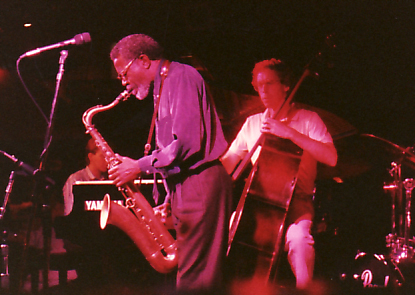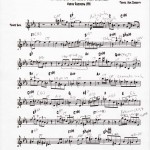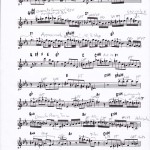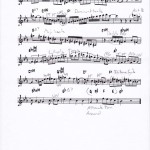Audio clip: Adobe Flash Player (version 9 or above) is required to play this audio clip. Download the latest version here. You also need to have JavaScript enabled in your browser.
Download the transcription: Eb, Bb, C, Bass Clef
“Isfahan” composed by Duke Ellington and Billy Strayhorn and performed by Joe Henderson, Tenor Sax; Christian McBride, Bass. From Lush Life: The Music of Billy Strayhorn, Verve Records 1992.
First of all, if you don’t have this album, do yourself a favor and go out and buy it right now; it is simply excellent.
When I am learning or working on tunes I find that transcribing a solo based on that tune or it’s changes always expedites my learning process. This solo is certainly no exception; Isfahan has some moderately challenging changes and Joe really does a great job navigating through the chords is a logical manner using a combination of chromatic voice leading and simple chords/arpeggiations to emphasize the chord structure.
While the harmonic language is pretty straightforward relative the chord structure (meaning he doesn’t go crazy with substitutions or playing out) he uses a lot of rhythmic variation to create interest and tension in the solo. I have to admit, there are a couple spots that really gave me trouble trying to notate the rhythm: mm. 30-31 are a pretty rough approximation of the rhythm (please if you have better or more accurate notation let me know!). Starting on the and of 4 in mm. 7 through beat 2 of mm. 8, that figure is actually a quarter note triplet, but I wasn’t sure how to notate that across the bar line so I ended up going with dotted 8th notes. This solo has a really good mix of 8th note swing, triplet feel and a couple spots of 16th note bop style phrases. I think my favorite moment is triplet whole tone scale figure in mm. 56-57. It comes almost out of nowhere and gives a really nice tension and release in just a couple of bars.
Performance Notes
1. In mm. 10, Joe overblows a concert G and sounds a concert C hence the notation.
2. In mm. 22 on beat 2, it sounds like he is playing the concert C as written while simultaneously over blowing an octave above, but I am not certain. I think it makes more sense for it to be up the octave.
3. Joe really stretches the time and mixes his 8th note feel up a lot on this one, so pay really close attention to the recording!
I hope you all enjoy the solo as much as I have! Please share your thoughts in the comments below!
Analysis



